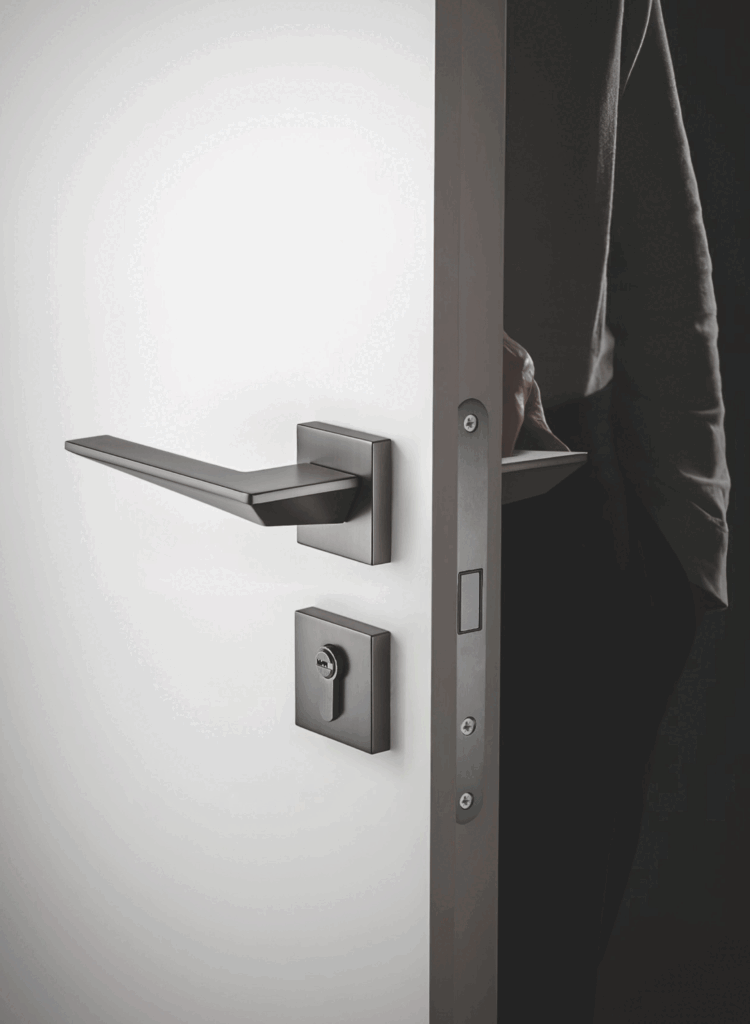When it comes to door hardware, ensuring quality is paramount. As a seasoned professional in the door hardware market with over 20 years of experience, I understand the importance of delivering top-notch products. This article will guide you through the essential steps to conduct quality inspections for door handles, mechanical locks, hinges, peepholes, and door closers. By adhering to these practices, you can enhance product reliability and customer satisfaction.
1. Understanding Quality Standards
Before conducting inspections, it’s crucial to familiarize yourself with industry standards. The American National Standards Institute (ANSI) and the Builders Hardware Manufacturers Association (BHMA) provide guidelines on performance, safety, and durability for door hardware. These standards cover aspects such as:
- Material Quality: Ensures the use of corrosion-resistant materials, especially for outdoor applications.
- Mechanical Performance: Specifies testing protocols for durability, strength, and functionality.
- Safety Compliance: Checks for features like anti-pick and anti-drill mechanisms in locks.
2. Initial Visual Inspection
The first step in quality inspection is a thorough visual assessment. Here’s what to look for:
- Surface Finish: Check for scratches, dents, or blemishes. A high-quality finish enhances both aesthetics and corrosion resistance.
- Color Consistency: Ensure that the color is uniform across all products, especially for plated or coated finishes.
- Dimensional Accuracy: Use calipers and gauges to verify that dimensions match the specifications. This includes the diameter of handles and the thickness of plates.
3. Material Verification
Material quality is critical in ensuring durability and performance. To verify this, you can:
- Conduct a Magnet Test: For stainless steel products, use a magnet. If it sticks, the material may be of a lower grade. For example, 304 stainless steel should not attract a magnet.
- Request Material Certificates: Always ask for certification from suppliers to ensure that materials meet industry standards.
4. Functional Testing
Once the visual inspection is complete, it’s time to test the functionality of the hardware. Here are some tests to consider:
For Door Handles:
- Grip Test: Ensure that the handle is comfortable to grip and easy to turn or pull.
- Rotation Test: Rotate the handle multiple times to check for smooth operation. It should not feel stiff or wobbly.
For Mechanical Locks:
- Locking Mechanism Test: Insert the key and lock/unlock several times. The mechanism should operate smoothly without any resistance.
- Durability Test: Simulate the usage by locking and unlocking the door multiple times to assess durability.
For Hinges:
- Swing Test: Open and close the door to test the hinge’s smooth operation. It should not produce any creaking sounds or resistance.
- Weight Bearing Test: Check if the hinge can support the door’s weight without sagging.
For Door Closers:
- Closing Speed Test: Adjust the closing speed and test to ensure it meets the desired settings.
- Latching Speed Test: Ensure that the door latches securely when closed.
5. Corrosion Resistance Testing
Corrosion can significantly affect the longevity of door hardware. To assess corrosion resistance:
- Salt Spray Test: Expose the hardware to a salt spray environment to simulate corrosive conditions. Evaluate how long it takes for signs of corrosion to appear.
- Environmental Testing: If applicable, test the hardware in extreme conditions (high humidity, temperature fluctuations) to gauge performance.
6. Packaging and Presentation
Quality inspection doesn’t stop at the product itself. The packaging plays a vital role in ensuring that the hardware arrives safely at its destination. Here’s what to check:
- Packaging Integrity: Ensure that the packaging is durable and can withstand transportation. Use strong materials that prevent damage during shipping.
- Labeling: Confirm that each package includes accurate labeling with product details, including specifications, installation instructions, and safety warnings.
7. Documentation and Record Keeping
Keeping detailed records of inspections is essential. This not only helps in tracking quality over time but also builds trust with your clients. Document the following:
- Inspection Results: Keep a log of all inspections, including any defects found and corrective actions taken.
- Supplier Certifications: Store material certificates and compliance documents for easy access during audits.
8. Continuous Improvement
Quality inspection should be part of a continuous improvement process. Regularly review your inspection procedures and make adjustments based on feedback from clients and internal assessments. Here are a few strategies:
- Customer Feedback: Solicit feedback from customers about product performance and quality. This can provide valuable insights into areas that need improvement.
- Employee Training: Ensure that employees involved in quality control are well-trained and aware of the latest industry standards and practices.
Conclusion
Conducting thorough quality inspections for door handles and other hardware is crucial for maintaining high standards and ensuring customer satisfaction. By understanding quality standards, performing detailed visual and functional tests, verifying materials, and maintaining proper documentation, you can significantly enhance your product quality.
At umaylock, we are committed to delivering exceptional door hardware solutions that meet the highest standards. By implementing rigorous quality inspection processes, we not only ensure our products perform well but also build lasting relationships with our clients. Let’s work together to unlock the doors to success!
Share This Story, Choose Your Platform!

